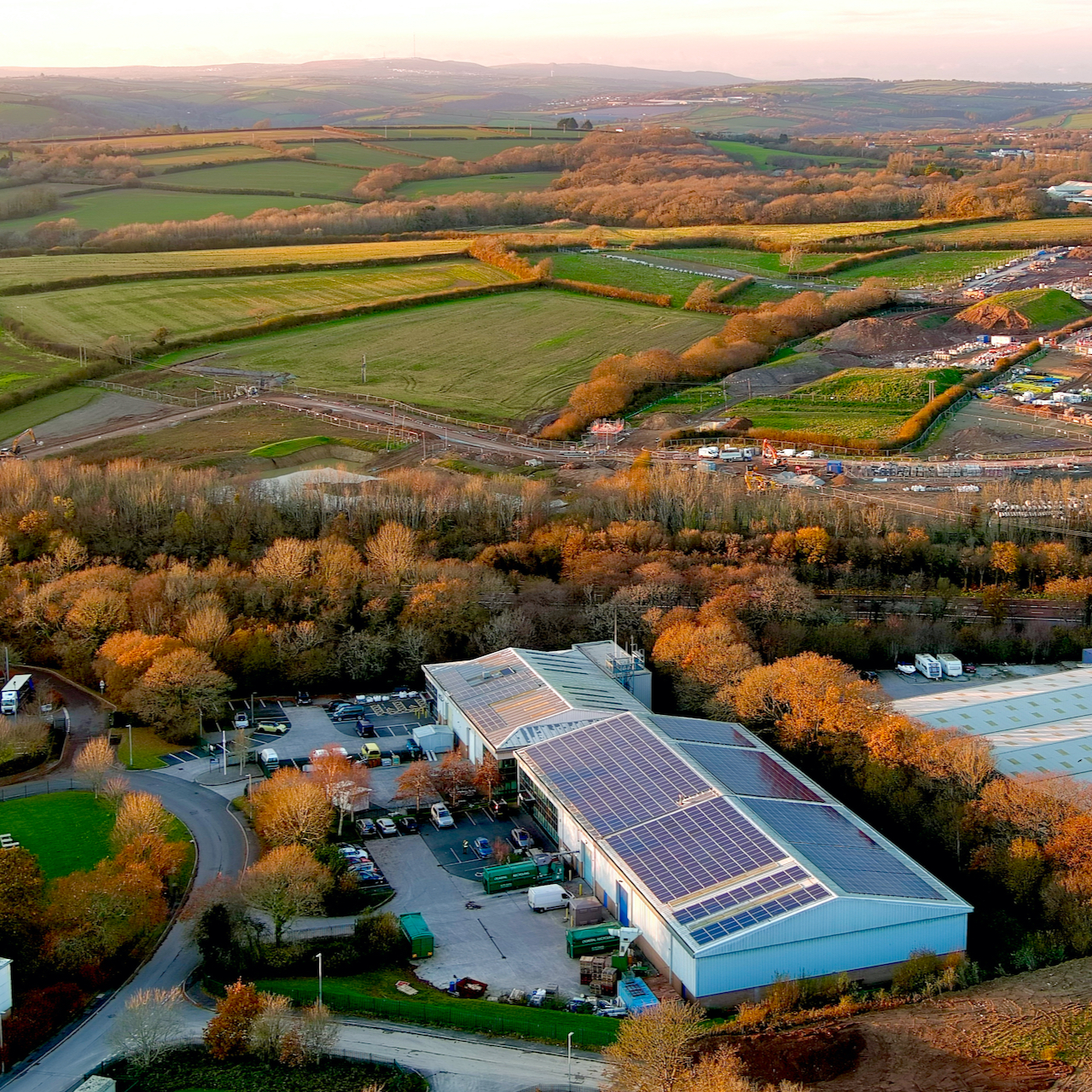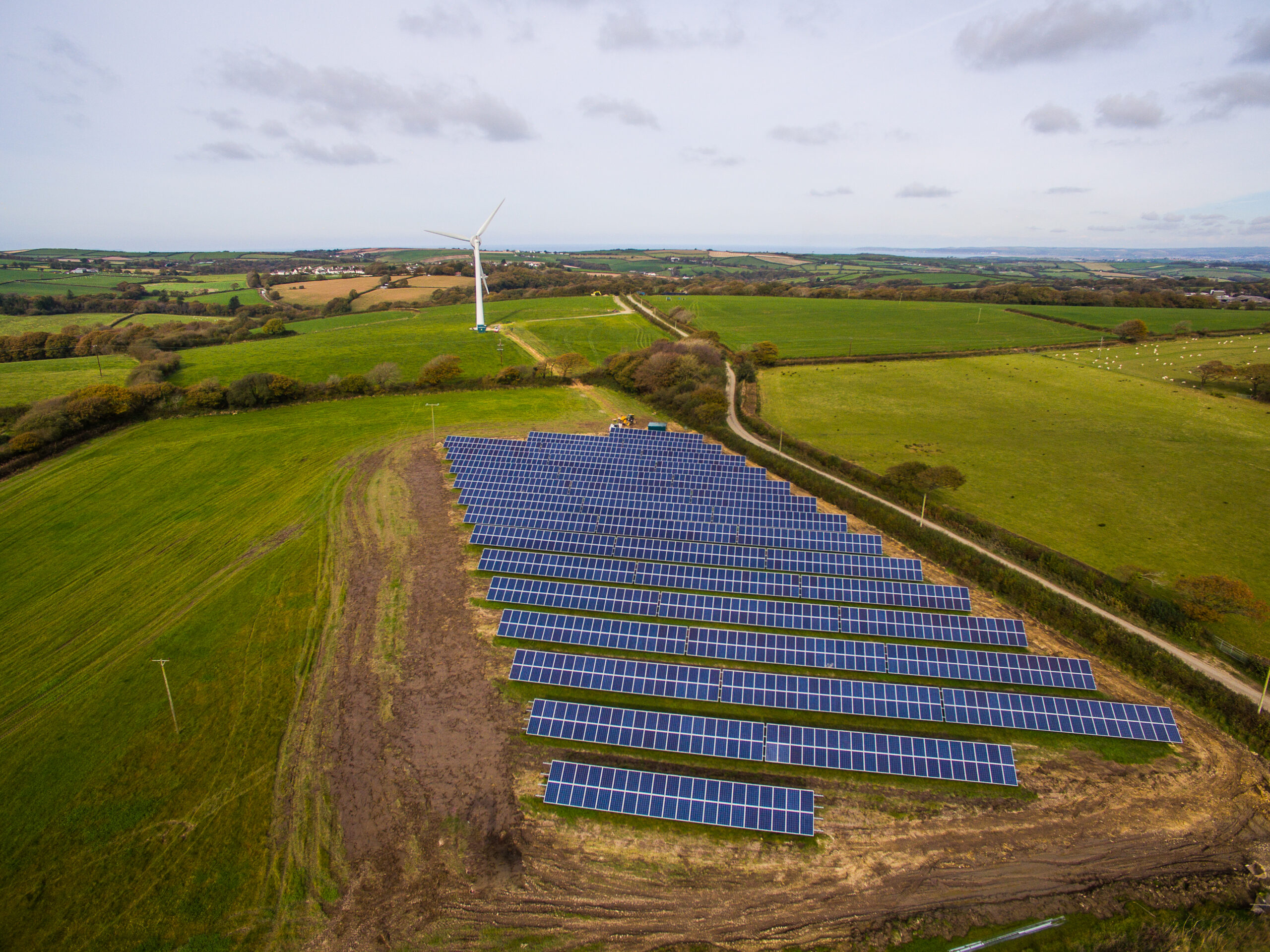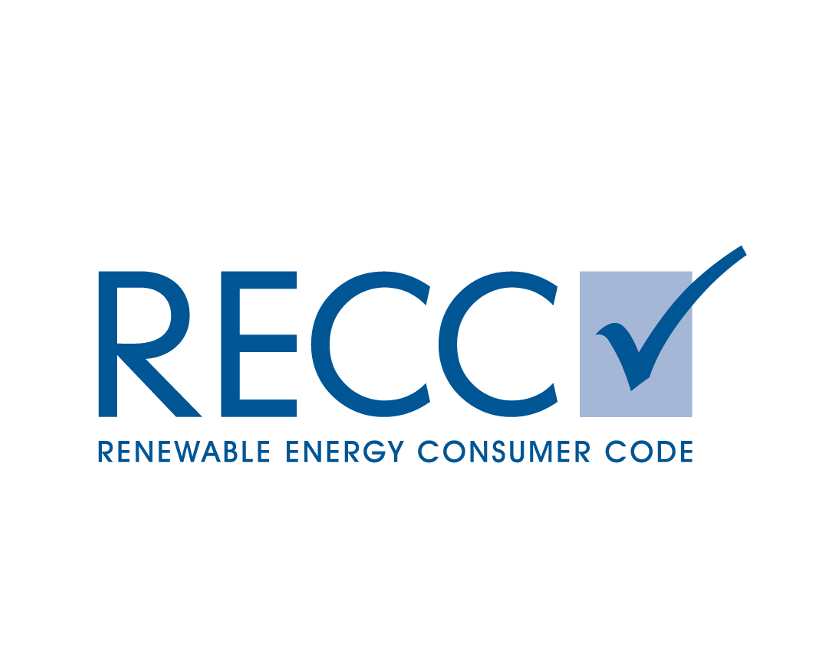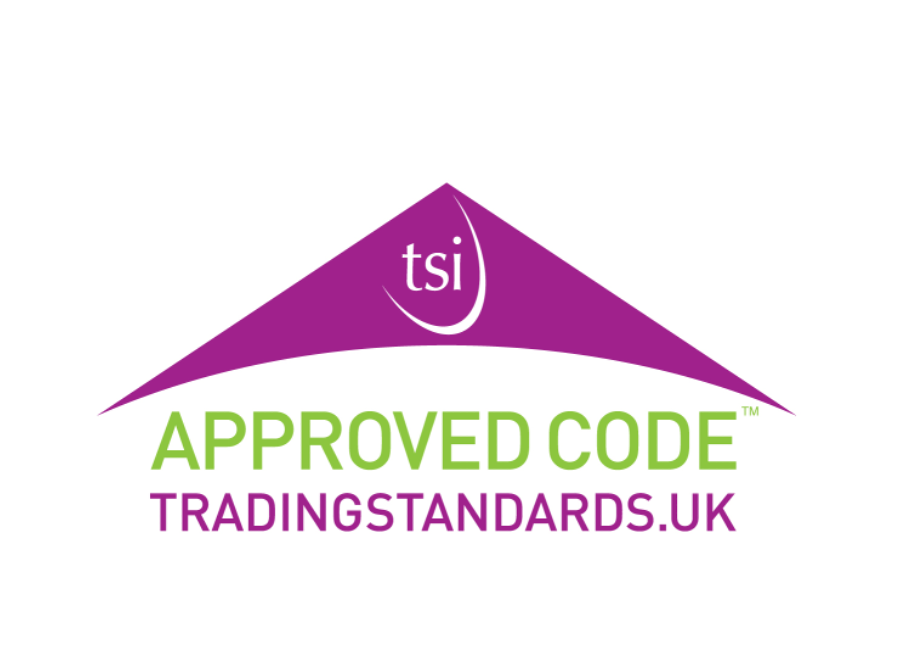Solar
If your business has energy costs or carbon reduction on its management agenda, then you should be considering solar PV.
Unit costs for electricity are typically under 5p per kWh if you generate it yourself with solar, while most UK businesses are buying it from the grid at well over 20p*.
* Source: Department for Energy Security and Net Zero, Quarterly Energy Prices, December 2023.
Even before the current energy crisis that gap was widening. Now, with all the prevailing volatility, the benefits of self-generation are more compelling than ever.
And every addition to our renewable energy capacity also gets us a step closer to net zero.
Completed projects
MWP installed
Generating enough to power:
homes
Reducing CO2 emissions by:
tonnes a year
Cost &
benefits
Energy costs have been volatile and trending upwards for years. By late 2023 the average price paid by UK businesses was above 29p per kWh, with many paying a great deal more.
By contrast, our latest solar installations are generating power at around 4 or 5p per kWh (even as low as 3p in some cases). And this rate is effectively fixed for the next 25 years.
The savings made on energy bills mean that the capital investment on solar projects can be paid off in as little as three years.
To work out the commercial feasibility of a project, we will look at:
From this we create a financial model that tells us the annual and cumulative benefits, the payback period and the internal rate of return (IRR).
It also tells us how much carbon you will save each year and over the lifetime of the system.
Contact us for a free site survey and energy audit for your business, get in touch today.
Practical
considerations
Geographical location and the roof’s pitch and orientation are the key variables that drive how much power the solar panels will produce.
In simple terms it’s sunnier in the south, and a gently-pitched, south-facing roof will perform best. But we’ve completed successful solar projects a long way north of our HQ in Cornwall, and on some pretty odd-shaped roofs.
Every solar PV system needs to be sized for the expected electricity demand – not just to fill the available space. Getting the design right for the demand profile is critical in making the installation a commercial success.
Battery storage or EV charging points can be incorporated into the system’s design from the start or retro-fitted later. Access routes and safety measures for both installation and maintenance are also factored in.
All elements are planned and project-managed to minimise any impact on the day-to-day running of your business.
Connecting to the grid relies on there being available capacity for export. If the local infrastructure needs to be upgraded this can lead to delays, although these are rare. CleanEarth deal with all the UK’s distribution network operators (DNOs) and have plenty of experience in securing the connection that’s needed.
Our in-house team handles everything from design through installation, and we provide ongoing maintenance and monitoring services to make sure the system continues to operate at full efficiency.
Funding
options
If you’d rather not make the capital investment in a solar PV system, there are a couple of alternative funding mechanisms that still mean you can benefit from a rooftop installation.
You can enter into a Power Purchase Agreement (PPA) with us, which means we install the system and lease your roof-space, selling you the electricity it generates at an agreed rate. This might be pegged to inflation or to the going rate for energy – there are several ways to structure the arrangement.
Alternatively, you can make the investment without committing your own capital, through an asset finance package. We can introduce you to several financing partners who can propose a deal to meet your needs.
Ground mount
systems
Ground mount systems can work well for businesses that would benefit from a larger system than their roof alone will accommodate.
For those with higher energy consumptions a ground mount system also brings higher yields than roof mount because the angle and aspect of the panels can be fully optimised. (They’re also easier to clean and maintain.)
If a system size of much over 100 kW is called for and the roof isn’t suitable – and assuming adjacent land is available – ground mount is the way to go. While planning consent is needed, CleanEarth’s in-house planning department are experienced in the process and will liaise with the local planning authority on your behalf.









